Bringing Earth Observation to Schools with Digital Integrated Learning Environments
Abstract
1. Introduction
“A learning module that integrates tools, data as well as background knowledge for earth observation into a system that provides a simple learning infrastructure and is easily accessible for teachers and students alike.”
2. Demand-Driven Development of Digital Integrated Learning Environments
2.1. Obstacles and Demands
2.2. Technical Aspects
2.3. E-Learning Aspects
2.4. Didactcal Aspects
3. Applying Integrated Learning Environments in Classrooms
4. Learning Modules in Past, Present and Future Application
5. Conclusions and Outlook
Author Contributions
Funding
Acknowledgments
Conflicts of Interest
Appendix A
Appendix A.1. The Remote Sensing in Schools Project (FIS)
Appendix A.2. Columbus Eye/Kepler ISS Project
Appendix A.3. ESERO Germany
Appendix B
References
- Siegmund, A. Satellitenbilder im Unterricht. Ph.D. Thesis, Pädagogischen Hochschule Heidelberg, Heidelberg, Germany, 2011. [Google Scholar]
- Ditter, R.; Jacob, C.; Siegmund, A.; Wolf, R. BLIF—A Remote Sensing Web Application for Competence Oriented School Education. In Proceedings of the Fifth Framework of AGIT and the GI-Forum Conference, Salzburg, Austria, 7–9 July 2010. [Google Scholar]
- Kerstin, V.; Roland, G.; Henryk, H. Einbindung fernerkundlicher Methoden in den Erdkundeunterricht—das Beispiel der Klassifikation und Change Detection. In Proceedings of the Fourth ‘Learning with Geoinformation’ Conference; Result of the Conference, Held within the Framework of AGIT and Organised in Co-Operation with the HERODOT Network as well as the GI-Forum, Salzburg, Austria, 8–10 July 2009. [Google Scholar]
- Asmussen, S.; Engemann, C.; Schühle, M.-H.; Stribel, D.; Wohlgemut, J. Bildungsplan des Gymnasiums. Bildungsplan 2016: Geographie; Neckar-Verlag GmbH: Villingen-Schwenningen, Germany, 2016. [Google Scholar]
- Gamerith, W.; Hemmer, I.; Czapek, F. Educational Standards in Geography for the Intermediate School Certificate. With Sample Assignments, 3rd ed.; DGfG: Berlin, Germany, 2014. [Google Scholar]
- Eggert, S.; Bögeholz, S. Göttinger Modell der Bewertungskompetenz—Teilkompetenz “Bewerten, Entscheiden und Reflektieren” für Gestaltungsaufgaben Nachhaltiger Entwicklung. Z. Didakt. Naturwissenschaften 2006, 12, 177–197. [Google Scholar]
- Goetzke, R.; Hodam, H.; Rienow, A.; Voß, K. Tools and Learning Management Functions for a Competence-Oriented Integration of Remote Sensing in Classrooms, GI_Forum 2013: Conference Proceedings; Wichmann: Heielberg, Germany, 2013; pp. 458–463. [Google Scholar]
- Lee, K.T. Teachers using an integrated learning environment to cater for individual learning differences in Hong Kong primary classrooms. Technol. Pedag. Educ. 2005, 14, 371–389. [Google Scholar] [CrossRef]
- Fox, M. The Effects of the Integrated Learning Environment on Student Performance at the Navy and Marine Corps Intelligence Training Center. Master’s Thesis, Old Dominion University, Norfolk, VA, USA, 2009. [Google Scholar]
- Renn, O.; Hiller, S. MINT-Nachwuchsbarometer. Bildung in der Digitalen Transformation; acatech-Deutsche Akademie der Wissenschaften: München, Germany, 2017. [Google Scholar]
- Hardwig, T.; Mußmann, F.; Peters, S.; Parciak, M. Zeiterfassungsstudien zur Arbeitszeit von Lehrkräften in Deutschland. Konzepte, Methoden und Ergebnisse von Studien zu Arbeitszeiten und Arbeitsverteilung im Historischen Vergleich; Niedersächsische Staats—und Universitätsbibliothek Göttingen: Göttingen, Germany; Georg-August-Universität Göttingen Kooperationsstelle Hochschulen und Gewerkschaften: Göttingen, Germany; GOEDOC Dokumenten—und Publikationsserver der Georg-August-Universität Göttingen: Göttingen, Germany, 2018. [Google Scholar]
- forsa Politik—und Sozialforschung GmbH. Die Schule aus Sicht der Schulleiterinnen und Schulleiter—Digitalisierung und Digitale Ausstattung: Ergebnisse einer Bundesweiten Repräsentativbefragung. Available online: https://www.vbe.de/fileadmin/user_upload/VBE/Service/Meinungsumfragen/2019-04-17_forsa-Bericht_SL_Digitalisierung_Bund.pdf (accessed on 14 August 2019).
- Clark, R.C.; Mayer, R.E. e-Learning and the Science of Instruction. Proven Guidelines for Consumers and Designers of Multimedia Learning; John Wiley & Sons: New York, NY, USA, 2011; ISBN 1118086163. [Google Scholar]
- Mayer, R.E. (Ed.) The Cambridge Handbook of Multimedia Learning, 1st ed.; Cambridge University Press: Cambridge, UK, 2005; ISBN 978-0-521-54751-2. [Google Scholar]
- Aldrich, C. Learning by doing. In A Comprehensive Guide to Simulations, Computer Games, and Pedagogy in E-Learning and Other Educational Experiences; Pfeiffer: San Francisco, CA, USA, 2005; ISBN 0787977357. [Google Scholar]
- Mayer, R.E. (Ed.) The Cambridge Handbook of Multimedia Learning, 2nd ed.; Cambridge University Press: Cambridge, UK, 2014; ISBN 9781107610316. [Google Scholar]
- De Jong, T.; Lazonder, A.W. The Guided Discovery Learning Principle in Multimedia Learning. In The Cambridge Handbook of Multimedia Learning, 2nd ed.; Mayer, R.E., Ed.; Cambridge University Press: Cambridge, UK, 2014; pp. 371–390. ISBN 9781107610316. [Google Scholar]
- Terhart, E. Constructivism and teaching: A new paradigm in general didactics? J. Curric. Stud. 2003, 35, 25–44. [Google Scholar] [CrossRef]
- Sjøberg, S. Constructivism and Learning. International Encyclopedia of Education; Elsevier: Amsterdam, The Netherlands, 2010; pp. 485–490. ISBN 9780080448947. [Google Scholar]
- Piaget, J. The Construction of Reality in the Child, 2nd ed.; Basic Books: New York, NY, USA, 1954. [Google Scholar]
- Kirschner, P.; Sweller, J.; Clark, R. Why Minimal Guidance During Instruction Does Not Work: An Analysis of the Failure of Constructivist, Discovery, Problem-Based, Experiential, and Inquiry-Based Teaching. Educ. Psychol. 2006, 41, 75–86. [Google Scholar] [CrossRef]
- Mayer, R. Should There Be a Three-Strikes Rule Against Pure Discovery Learning? Am. Psychol. 2004, 59, 14–19. [Google Scholar] [CrossRef] [PubMed]
- Sweller, J. Cognitive Load during Problem Solving: Effects on Learning. Cognit. Sci. 1988, 12, 257–285. [Google Scholar] [CrossRef]
- Tuovinen, J.E.; Sweller, J. A comparison of cognitive load associated with discovery learning and worked examples. J. Educ. Psychol. 1999, 91, 334–341. [Google Scholar] [CrossRef]
- Tanja, R. Moderater Konstruktivismus. In Theorien in der Biologiedidaktischen Forschung: Ein Handbuch für Lehramtsstudenten und Doktoranden; Krüger, D., Vogt, H., Eds.; Springer: Berlin/Heidelberg, Germany, 2007; pp. 69–79. ISBN 978-3-540-68166-3. [Google Scholar]
- Duit, R. Zur Rolle der konstruktivistischen Sichtweise in der Naturwissenschaftsdidaktischen Lehr—und Lernforschung. On the Role of the Constructivist Perspective in Didactic Research on Science Instruction; Beltz: Weinheim, Germany, 1995. [Google Scholar]
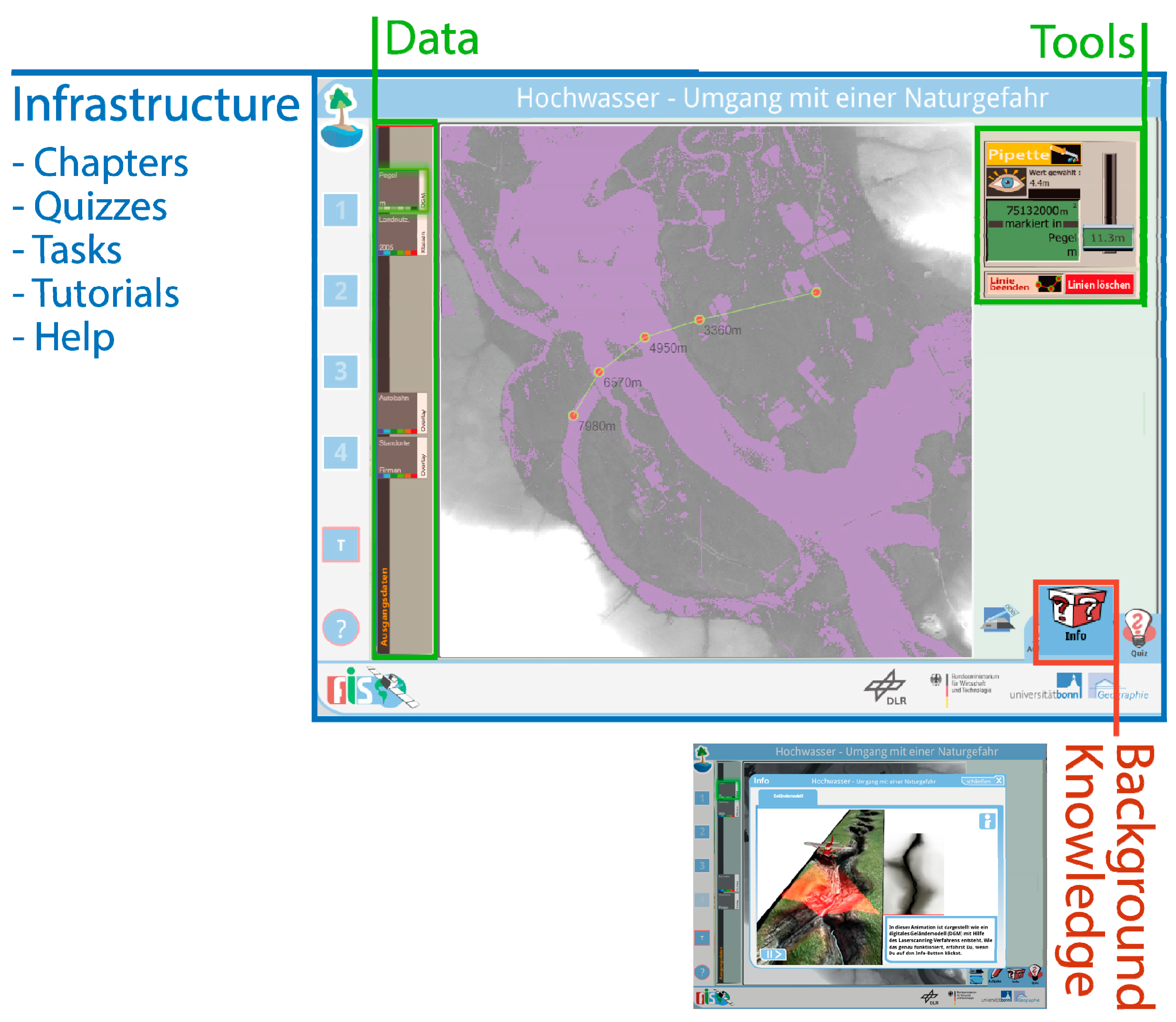

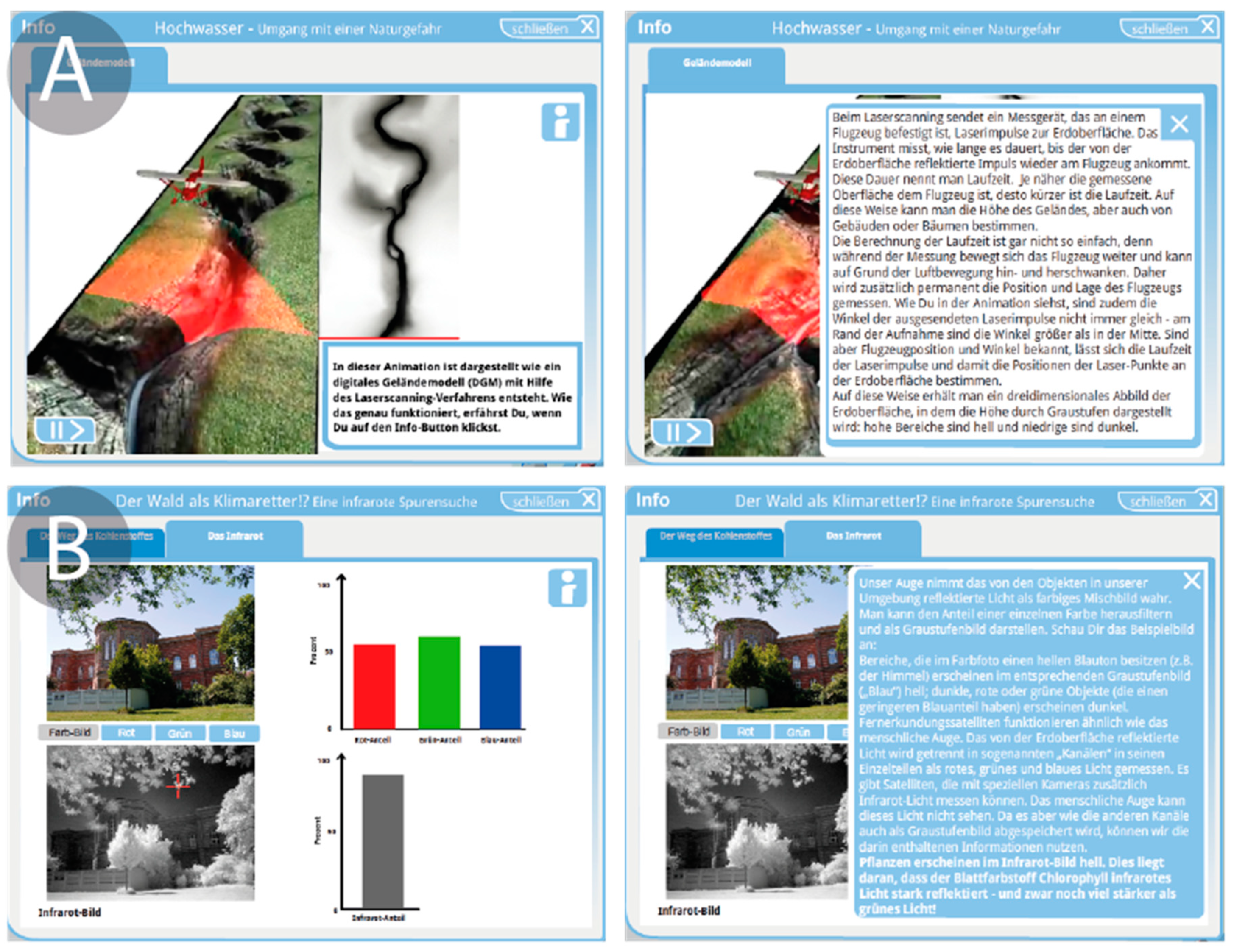

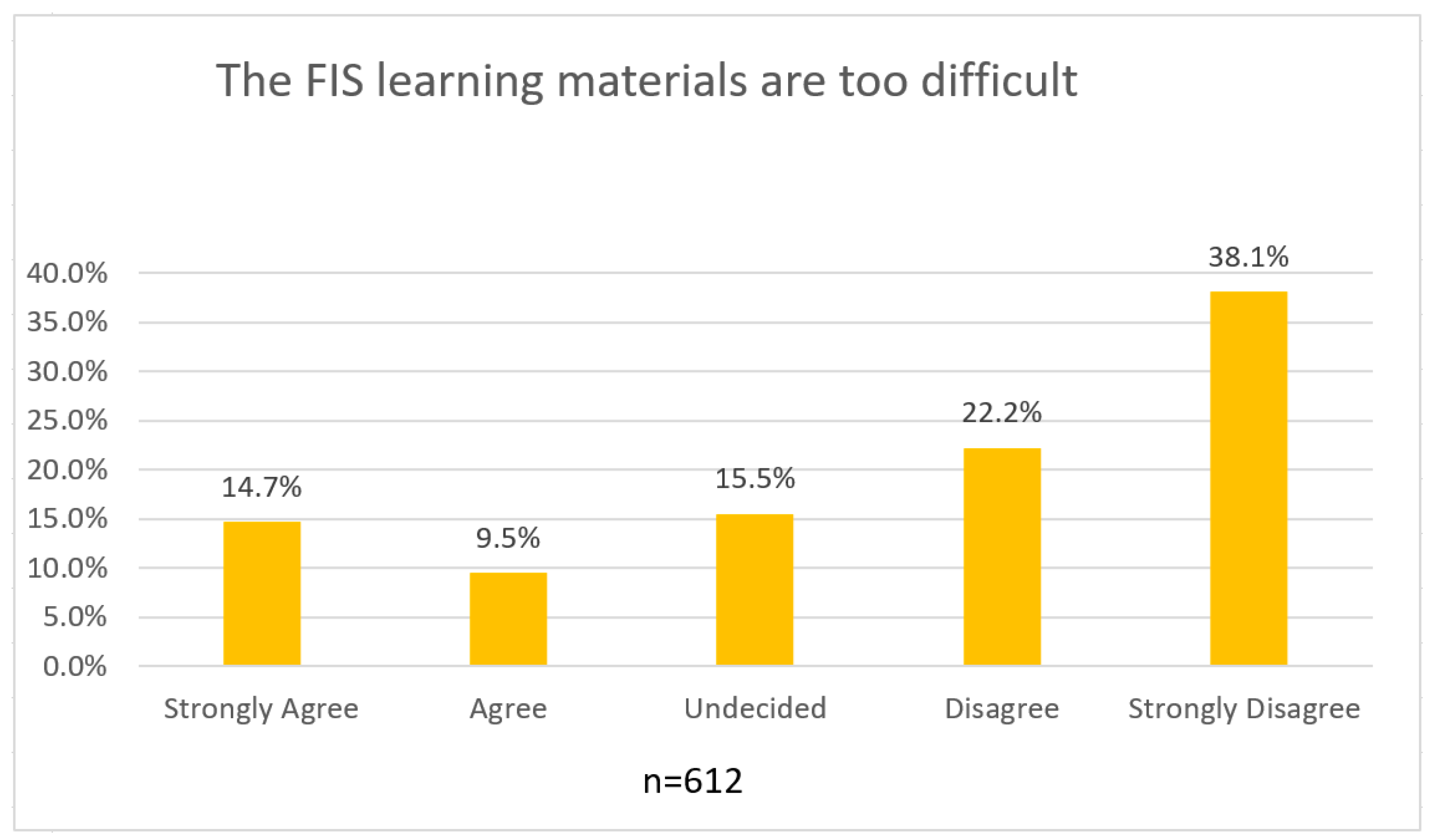

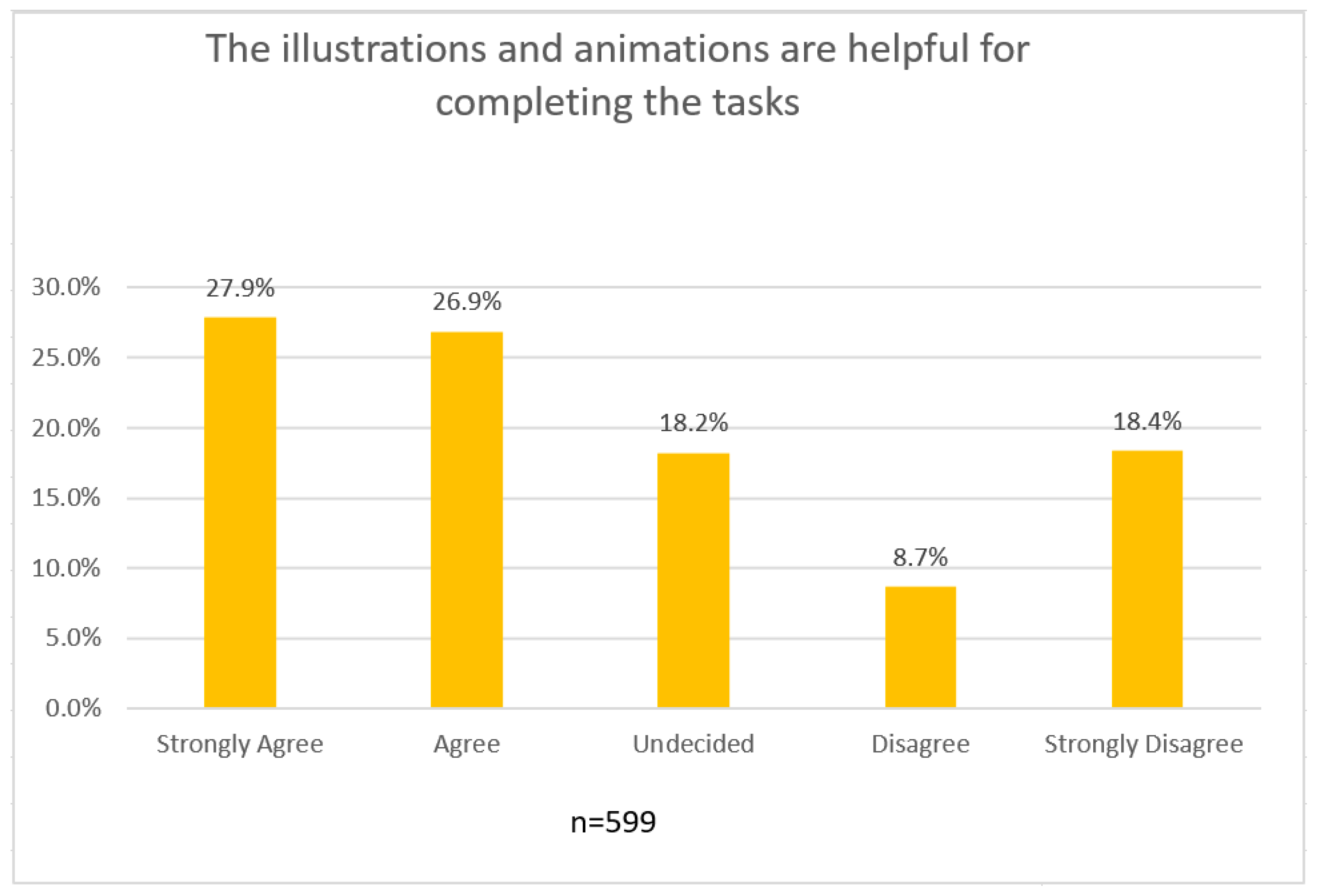
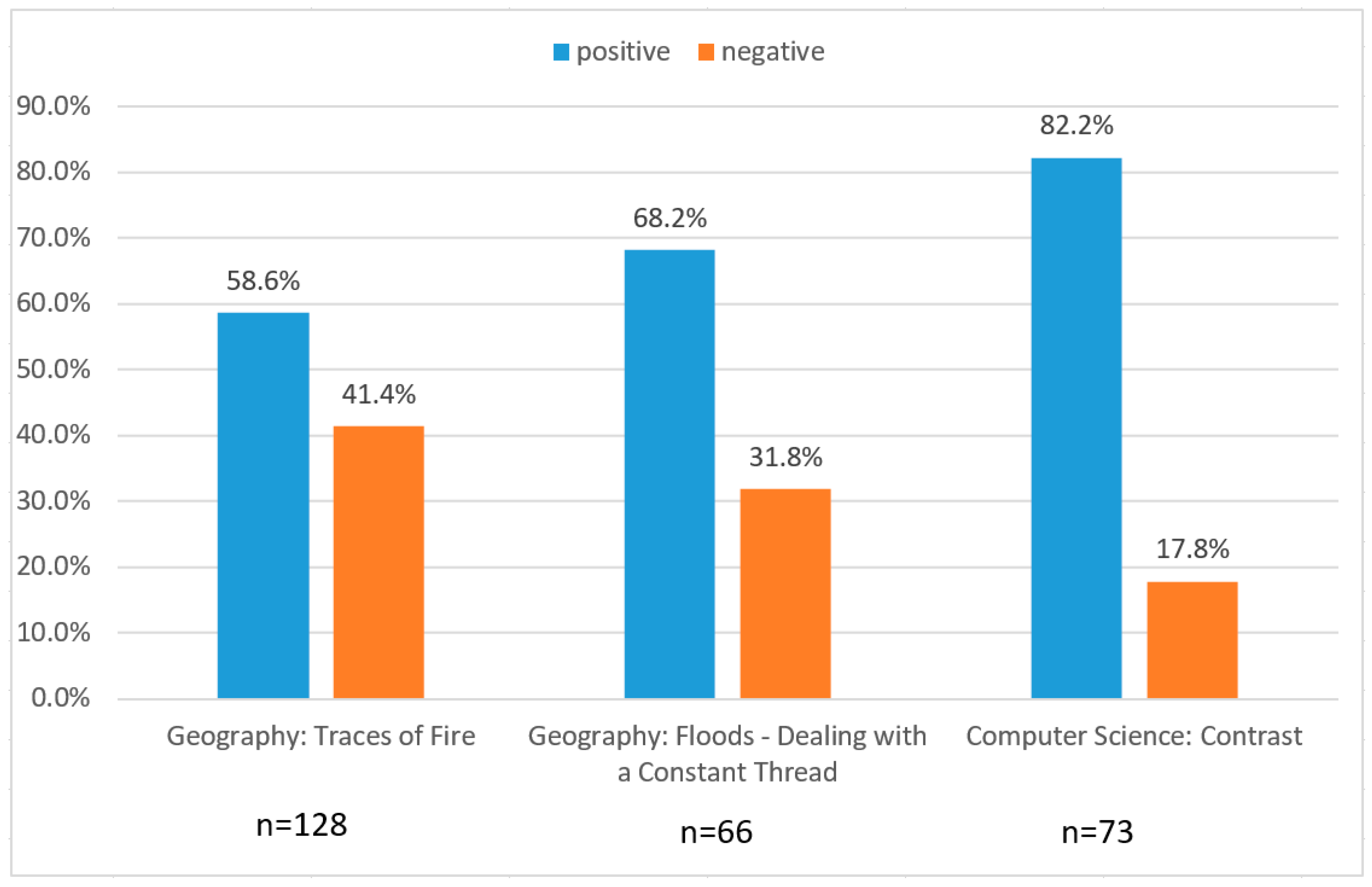
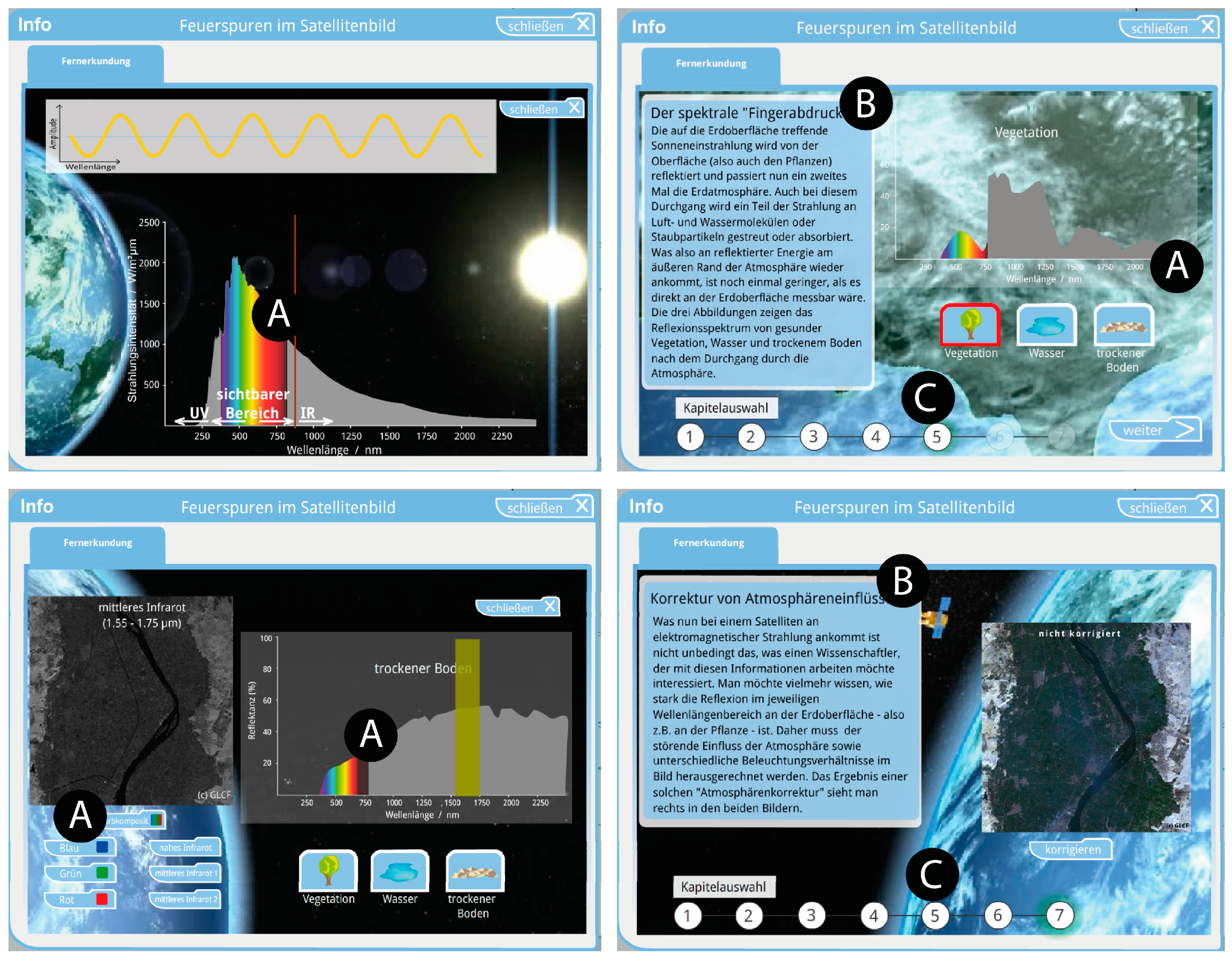
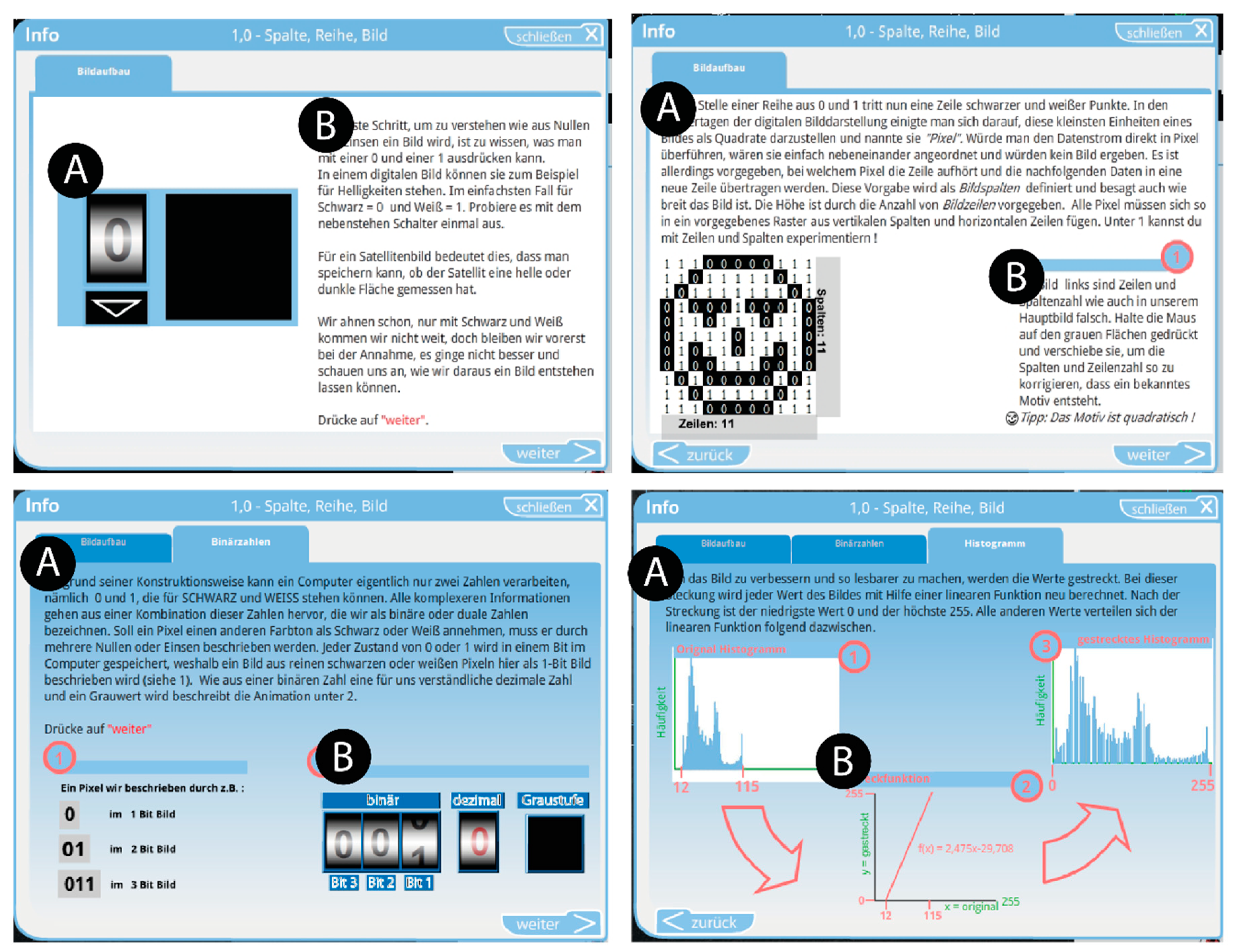
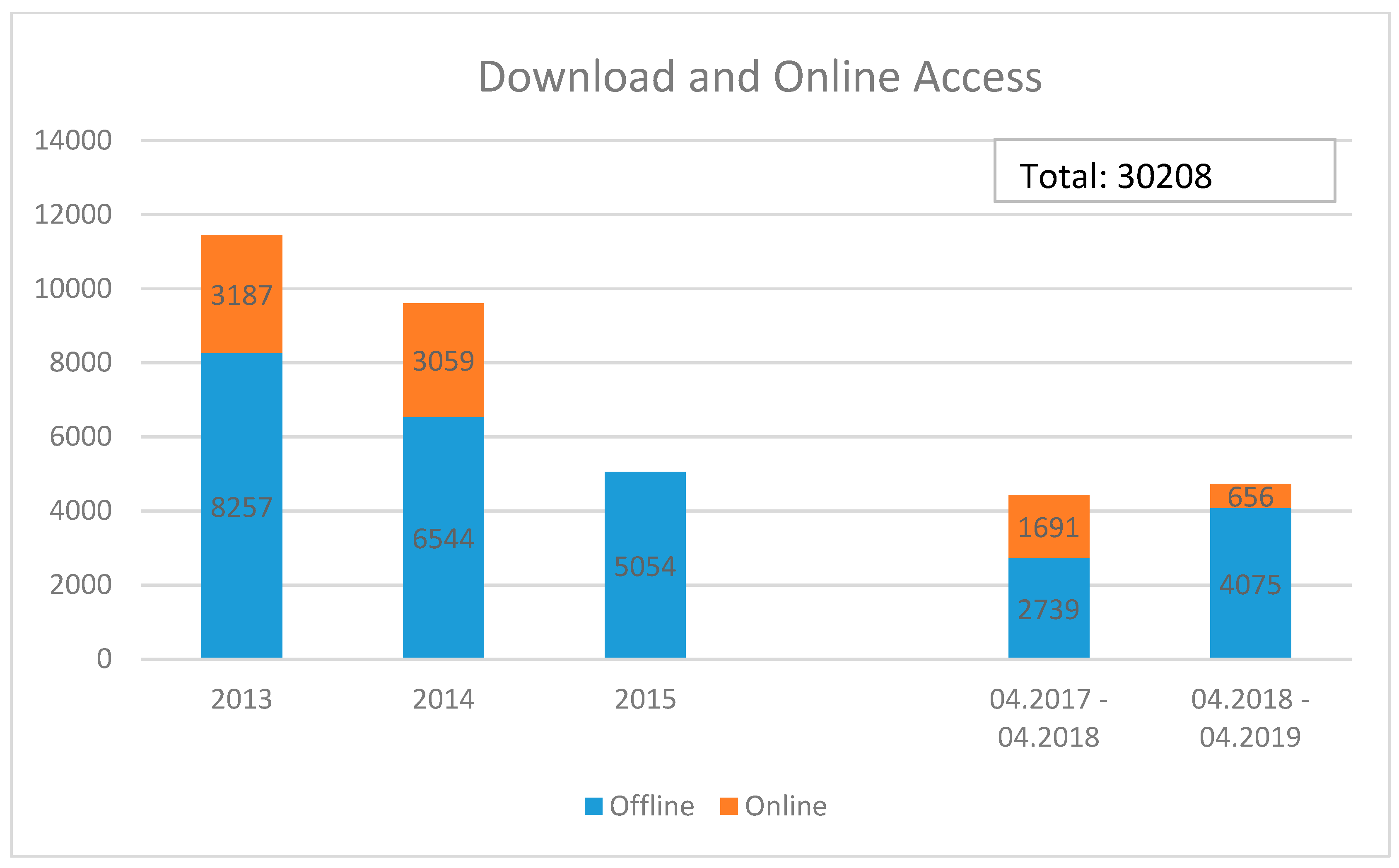
| Demand | Technical Contribution |
|---|---|
| Unencumbering Infrastructure | The modules have no need for installation; they are accessible either online or are downloadable, and can be directly executed. |
| Scalable Tools | The tools resemble their counterparts found in professional software, but are redesigned for ease of use. They can be tied to a certain task, meaning they are only made available when needed. |
| Prepared Data | The data is predefined for the task at hand. No data has to be prepared on the teacher’s side. Color corrections are done automatically. Using a simple drag and drop-based user interface, the data can either be displayed or added to a tool for analysis. |
| Integrated Background Knowledge | The background knowledge needed to understand the task can be easily accessed in the learning environment, and is heavily driven by animations and interactions. |
| Functionality Group | Description | Functionalities |
|---|---|---|
| Core Functionalities | Functionalities that are not triggered by user input. |
|
| Main functionalities | Basic functionalities that serve image analysis and are not tied to a task or a data type |
|
| Analysis functionalities | Functionalities that are more specifically tied to a task or data type. |
|
© 2020 by the authors. Licensee MDPI, Basel, Switzerland. This article is an open access article distributed under the terms and conditions of the Creative Commons Attribution (CC BY) license (http://creativecommons.org/licenses/by/4.0/).
Share and Cite
Hodam, H.; Rienow, A.; Jürgens, C. Bringing Earth Observation to Schools with Digital Integrated Learning Environments. Remote Sens. 2020, 12, 345. https://doi.org/10.3390/rs12030345
Hodam H, Rienow A, Jürgens C. Bringing Earth Observation to Schools with Digital Integrated Learning Environments. Remote Sensing. 2020; 12(3):345. https://doi.org/10.3390/rs12030345
Chicago/Turabian StyleHodam, Henryk, Andreas Rienow, and Carsten Jürgens. 2020. "Bringing Earth Observation to Schools with Digital Integrated Learning Environments" Remote Sensing 12, no. 3: 345. https://doi.org/10.3390/rs12030345
APA StyleHodam, H., Rienow, A., & Jürgens, C. (2020). Bringing Earth Observation to Schools with Digital Integrated Learning Environments. Remote Sensing, 12(3), 345. https://doi.org/10.3390/rs12030345





